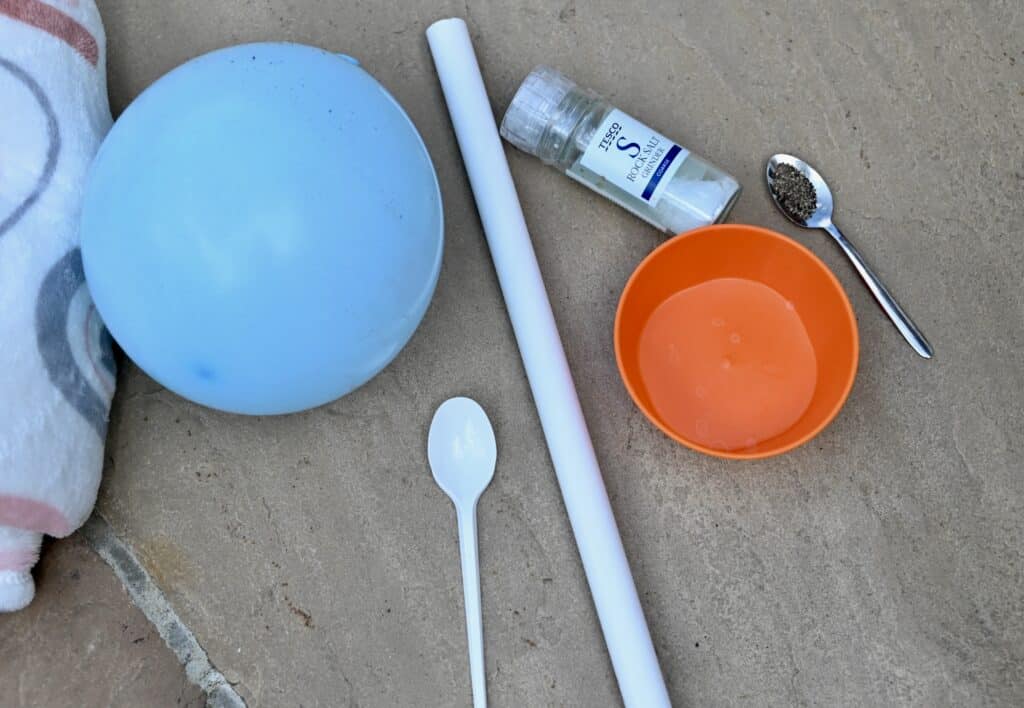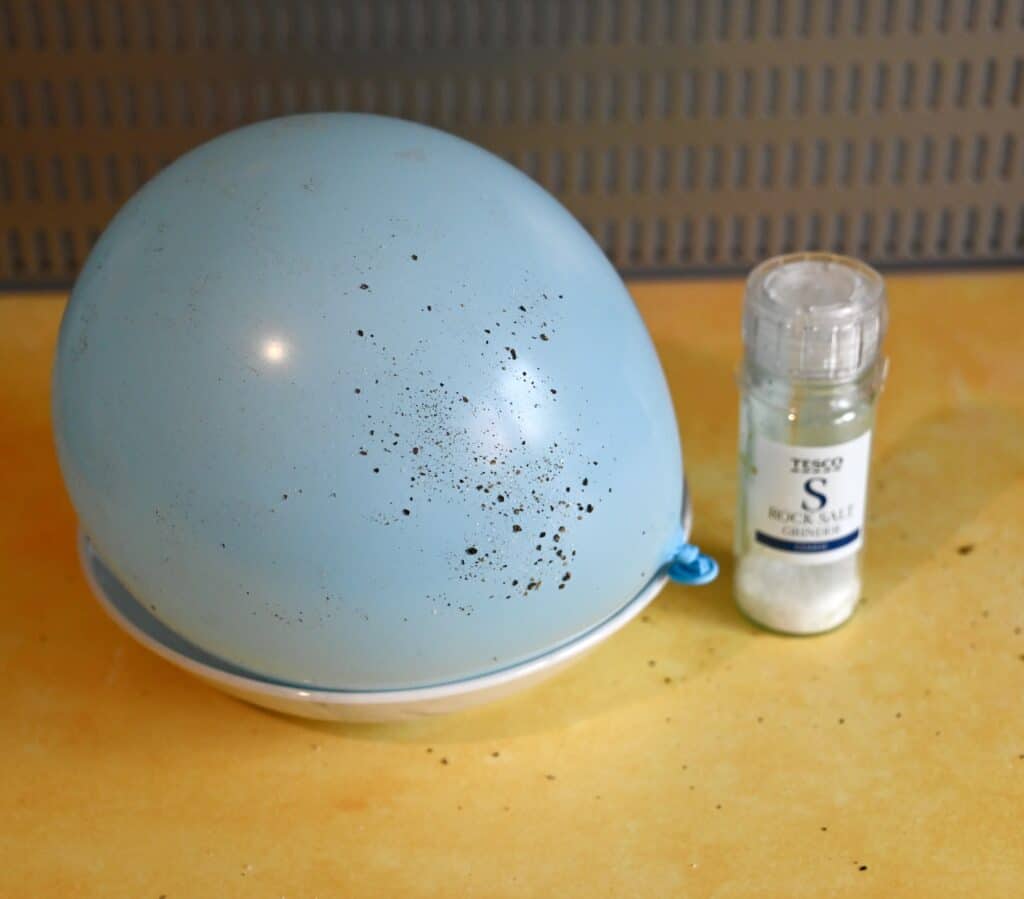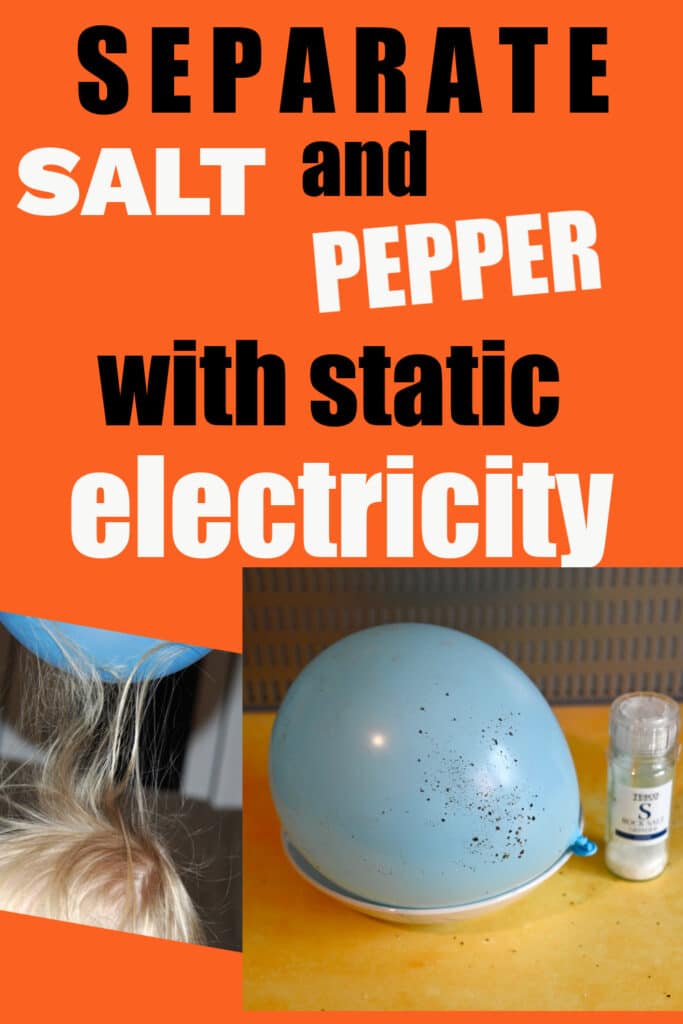Did you know you can separate salt and pepper with static electricity? It works because pepper is lighter than salt, so while both salt and pepper are attracted to an object charged with static electricity, only the lighter pepper jumps up.
Static electricity is the build-up of electrical charge on the surface of an object. It is created when objects are rubbed together or pulled apart. Positive charges build up on the surface of one object, and negative charges on the other.
How to separate salt and pepper with static electricity
You’ll need
Salt
Pepper
Bowl
Balloon/plastic spoon or PVC pipe
Wool clothing

Instructions
Mix a teaspoon of salt and a teaspoon of pepper in a small bowl.
Blow up the balloon and rub it for about 30 seconds on a wool garment or your hair.
Hold the balloon over the bowl of salt and pepper. Only the pepper will jump up to the balloon. If you listen carefully, you’ll hear a cracking sound like static electricity!
The same happens when a PVC pipe or plastic spoon is charged with static electricity.

Why does static electricity separate salt and pepper?
When the plastic spoon or balloon is rubbed on the wool, it gains electrons, giving it an overall negative charge. This charge is what we call static electricity. When the charged balloon is placed near the salt and pepper, it polarises the salt and pepper, leaving one end positive and one end negative. The positive end is attracted to the negatively charged balloon and jumps up. Both salt and pepper are attracted to the balloon, but the lighter pepper jumps up more easily.
Extension Activities
Think about other ways to separate salt and pepper.
Mix a salt and pepper mixture with water. Salt dissolves in water, but pepper is insoluble and floats on the surface. Filter the water mixture to separate the pepper.
Salt is denser than pepper, so if you gently shake the mixture, the denser salt moves to the bottom.

Last Updated on June 13, 2024 by Emma Vanstone

Leave a Reply